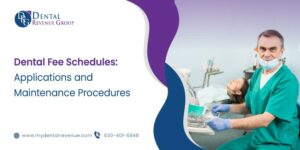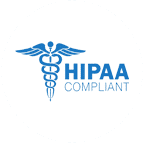Most people prioritize their health. “If you’re healthy, you’re wealthy,” as the saying goes. The same can be said for a dental practice. A robust dental practice will have thriving production and a healthy bottom line. Dentists should consider key performance indicators to help assess the condition of their practice.
Key Performance Indicators (KPIs) are firm facts or measurements that reflect the most significant considerations in practice success. The facts, numbers, and metrics that are most crucial for comprehending the performance of a dental practice are known as key performance indicators (KPIs). KPIs provide what dentists need to understand about their dental practices in an age of practice management software, analysis tools, and other technology.
Despite the advancement and accessibility of numerical information and data about practice performance, most dentists concentrate on a small number of metrics centered on production, revenue, and income. Making data-driven decisions based on key performance indicators (KPIs) can help improve dental practice performance and patient care. A practice that fails to track and monitor key performance indicators (KPIs) is operating blindly, with no early warning signs or indicators of declining to practice performance. That’s why a streamlined system for efficiently and effectively handling all areas of the dental practice is required—to save time without affecting the practice’s health.
Why Are Key Performance Indicators(KPIs) Important?
Dental practices that frequently measure KPIs understand that these indicators show how well the company is performing now and give a history of performance. This is especially important because it allows you to see how and where the business has improved and where it may be failing. You are undermining your dental practice by failing to effectively measure key performance indicators (KPIs). They can also expose areas for improvement. If you don’t keep a close eye on your performance measures, you might miss out on opportunities that could be quickly filled by changing your workflows, marketing strategy, or staffing practices.
Furthermore, KPIs can assist you in improving the practice efficiency, clinical operations, lowering overheads, and monitoring patient growth.
Six Crucial Key Performance Indicators (KPIs) For Your Dental Practice
The fact is that each dental practice and specialty has its own set of KPIs. What is important to you may not be essential to another dentist. Understanding your business objectives and the metrics that best reflects them are critical. Suppose a KPI demonstrates something wrong or the practice is not performing well in a specific area. In that case, it can be addressed by looking at additional metrics and deciding why performance falls short of expectations. However, by tracking these six KPIs regularly—just as a physician takes a patient’s vital signs and blood tests for a physical—the practice can evaluate how well it is performing. Continue reading for six dental practice KPIs to monitor.
Practice Production
Production is a key performance indicator for a dental practice. Monitoring production will reveal whether your production levels are satisfactory or not, indicating that your practice is performing well. Production can be evaluated in terms of the total number of visits and the amount of production per visit (PPV).
The number of patients decreases if production is low, whereas a low PPV could indicate that scheduled patients accept less treatment. Practices should establish an annual production target. Without increasing production, the practice’s business performance will ultimately decline. Production must increase; it should be measured daily, weekly, monthly, quarterly, and annually. The practitioner can quickly identify whether there has been a decrease in overall practice achievement by comparing production to a KPI goal or target. Rising output is a good sign for any practice.
Calculate Collections
Collection rates are a powerful KPI that can make or break a practice’s cash flow and revenue. Uncollected insurance revenue costs an average practice around 9% of its annual production. Although production is an essential metric for assessing overall practice performance, collections ultimately determine cash flow and income. Collections will be remarkable in practices with more insured patients and dependable dental billing services. Dental insurance plans range from fee-for-service to entirely PPO, and practices should recognize their model and build the necessary collection systems to be profitable and successful with the proper KPIs.
Practice Profit
Profit is what remains after all bills have been paid. The issue with evaluating profit per month as a KPI is that expenses vary month to month. Insurance premiums, taxes, or staff bonuses must be paid in particular months. Because two bills or months are not the same, you must understand this KPI. Profit is an essential KPI because, as the saying goes, you can only spend profit, not revenue. Profit is a significant factor in the practice’s value. Profit is crucial to monitor because it incorporates production, collections, and overhead elements. Each practice should have unique key performance indicators (KPIs) for practice profitability. This is a straightforward calculation of collections with less overhead. Everything left over may be considered profit in terms of what goes to the dentist. The profit can be used to purchase the latest technology, fund retirement, or supplement the dentist’s income. It is not a question of how much profit is spent but how much profit is gained.
Average Production Per Patient (APV)
Average production per patient represents the average revenue each patient generates for the practice. If this figure is lesser, you and your employees will need to adopt strategies such as adding new services or lowering costs to attract new patients. Furthermore, you may see many patients with a lower dollar amount per patient. Is it possible to mitigate appointment times so providers can spend more time with each patient and provide more comprehensive care? Because new patients require more care, your average production per new patient should be much greater than your APV number. The average production per patient illustrates the patient’s financial worth to a practice. Every good business analyses the average revenue per customer regularly and works to increase from there. The average output per patient should rise year after year. When it is not growing, it is most likely decreasing. Dentists and office managers must be aware of the average production per patient and the strategies that can be used to improve performance. Increased whitening cases, the addition of a periodontal diagnostic program, or the implementation of a new service, such as sleep apnea treatment, are all ways to raise average production per patient significantly. Tracking APV will also assist you in avoiding overbooking, which can result in burnout. When you understand how much an active patient can bring in, you can decide whether you can broaden your team by hiring more dental professionals or support personnel while still finding time for yourself.
Overhead
You must understand how much it costs to operate and what you need to collect to cover your overhead and turn a profit. Nobody enjoys discovering at the close of the month that they do not contain sufficient money to pay themselves. High overhead is often a company’s silent killer. Fixed expenses—those that cannot be easily changed or reduced—often put significant strain on practices and lower income. Suppose overhead is greater than these KPI benchmarks. In that case, an analysis should be conducted to determine which classifications are higher than acceptable, and an approach to carry overhead in line should be developed and implemented.
Case Acceptance Rates
The case acceptance rate is an important KPI for measuring production, and they also assist you in determining the effectiveness of your plan presentations. Case acceptance rates are widely regarded as the most volatile KPIs in dental practices. It is critical to set case acceptance targets representing treatments’ form and complexity. For example, a 90% target is acceptable for single-tooth processes, but this figure may be lower for more complicated treatment procedures.
Conclusion
To summarize, while a practice may appear to be running smoothly, tracking critical KPIs is one way to determine its proper health. These six key performance indicators (KPIs) can demonstrate a team’s success and identify areas for improvement. The entire team has a direct impact on the practice’s overall health. I hope these KPIs are useful! More facts should be tracked for individual employee performance and planning, but this is a good summary of the most significant ones for overall dental practice performance. Continuous review and response to key performance indicators (KPIs) may assist you in determining ways to provide better care to your patients and may also be the catalyst to profitability for your practice.
Implement KPI monitoring for your dental practice immediately if you have not already. DRG can assist you with your KPI strategies to simplify your reporting, identify revenue opportunities, and treat more patients. We will ensure that regular reports on the achievement of your practice are evaluated, allowing you to maximize analytics to boost your bottom line. Practices must constantly track their KPIs to understand and detect deviations from the norm. This can be accomplished quickly using short reports from your practice management software. The front desk team should assemble the report or office manager for daily, weekly, monthly, and annual reviews. When you review this data regularly, it will give you an idea of how your practice is doing. This will enable the practice to capitalize on strengths, weak points, opportunities, and dangers earlier than in the past, avoiding challenges and barriers. KPIs do not have to be difficult, threatening, or unpleasant.
Furthermore, this is the best method for calculating your return on investment and making informed decisions. We display the critical KPIs and related data metrics, offering a single reference point for tracking practice performance. Analyzing practice’s performance will be much easier with a pre-defined set of relevant KPIs.











